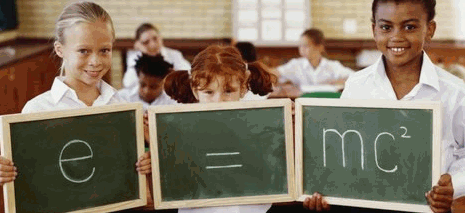|
|
|
|
|
|
|
News & Views item - June 2007 |
![]() Science Reports Major U.S. Research Universities are Working to
Interest and Prepare Good Science Students to Go Into Primary and
Secondary School Teaching. (June 1, 2007)
Science Reports Major U.S. Research Universities are Working to
Interest and Prepare Good Science Students to Go Into Primary and
Secondary School Teaching. (June 1, 2007)
The June 1 issue of the journal Science features a News Focus article, "Preparing Teachers: A New Twist on Training Teachers" by Jeffrey Mervis.

Major U.S. research universities are beginning to steer some of their best students into the classroom in order to address a serious shortage of quality science and math teachers. "Heather McKnight," Mervis writes, "transferred to [Utah's Brigham Young University (BYU) in her third year at university] and last month she graduated with a physics degree and a certificate to teach secondary school science. She's finishing up an on-campus job--designing an online virtual science program for an academic publisher--while she sifts through several offers for a high school teaching spot back east." Previously she had studied at Carnegie Mellon University and Cornell where her interest in going into secondary school teaching was met by both mentors and fellow students with admonitions that she would be "throwing away" her research career.
Over the past several months Science detailed Mervis to determine, "How can the[US] produce more and better science and math teachers," and Science staff visited BYU "the University of Texas (UT), Austin, and the University of Colorado, Boulder (CU-B)--that are tackling the question in different ways. Administrators on each campus have data to back up their claims that what they are doing is working."
Summarising the problem the following paragraph could just as well have been written regarding the Australian primary and secondary public school systems:
The current shortage of math and science teachers in middle and high school is the result of many factors, including the lure of higher-paying industry jobs, high attrition and burnout, an aging workforce, and a growing school-aged population. Unlike vacancies in the private sector, however, a teacher shortage doesn’t translate into a teacherless classroom. Rather, too often the position is filled by an “out-of-field” teacher; that is, someone with little or no college training in the subject. In 2000, for example, two-thirds of high school physics students were taught by teachers who didn’t major in physics. Even for a core subject like math, the figure is 31%.
Mervis then points to the matter of the mind set of university science faculties, "[M]any science departments actually have a bigger problem [than funding] with the very idea that they should help prepare the next generation of science and math teachers. That job has traditionally been left to schools of education. 'It’s a sea change for major research universities, who traditionally have never prepared teachers,' says Bruce Alberts [immediate] past president of the National Academy of Sciences, who made improving science education one of his priorities during his 12-year tenure."
But lack of sufficient and appropriate funding is a serious problem and the US Congress has just passed legislation that would "authorize hundreds of millions of dollars a year for the Robert Noyce Scholarship program at the National Science Foundation (NSF), which gives money to STEM majors who agree to teach in high-need school districts," while, "This month, the ExxonMobil Foundation will hold a meeting in Texas about its US$125 million National Math and Science Initiative (NMSI) that hopes to replicate the [University of Texas] UTeach program [a multifaceted 10-year-old program that has become a national role model for turning STEM (science, technology, engineering, and mathematics) majors into classroom teachers.] at dozens of college campuses (nationalmathandscience.org)."
Jeffrey Mervis' article is available at http://www.sciencemag.org/cgi/content/full/316/5829/1270 requires a subscription for access.